Explore the captivating world of “animals that start with I.” From majestic mammals to enchanting birds and fascinating insects, these creatures bring a unique charm to the animal kingdom. Join us as we embark on a thrilling journey, discovering intriguing facts and remarkable features about each of these 37 incredible animals.
Animals That start with I
Ibis

Kingdom: Animalia
Phylum: Chordata
Class: Aves
Order: Pelecaniformes
Family: Threskiornithidae
Genus: Varies by species
Scientific Name: Varies by species
Fun Fact: Ibises are wading birds known for their long, curved bills. They can be found in various habitats around the world, from wetlands to savannas.
Ibises are elegant birds with long legs and a distinctive curved bill. They are often seen foraging for food in shallow waters, using their specialized bill to probe the mud or water for insects, small fish, and other prey.
Iguana

Kingdom: Animalia
Phylum: Chordata
Class: Reptilia
Order: Squamata
Family: Iguanidae
Genus: Iguana
Scientific Name: Iguana spp.
Fun Fact: Iguanas are large lizards known for their impressive ability to change color and their unique crests of spines along their backs.
Iguanas are reptiles that inhabit tropical regions, often found in trees or near water sources. They have a unique appearance, with rough, scaly skin and a long tail. Their ability to change color helps them regulate their body temperature and blend into their surroundings.
Impala

Kingdom: Animalia
Phylum: Chordata
Class: Mammalia
Order: Artiodactyla
Family: Bovidae
Genus: Aepyceros
Scientific Name: Aepyceros melampus
Fun Fact: Impalas are graceful antelopes found in savannas and woodlands. They are known for their incredible jumping ability, reaching heights of up to 10 feet.
Impalas are slender antelopes with long, spiral horns and a reddish-brown coat. They are fast runners and agile jumpers, capable of leaping great distances to evade predators. Their herd behavior and striking appearance make them a common sight in African grasslands.
Indri

Kingdom: Animalia
Phylum: Chordata
Class: Mammalia
Order: Primates
Family: Indridae
Genus: Indri
Scientific Name: Indri indri
Fun Fact: Indris are large lemurs native to Madagascar. They are known for their distinctive loud calls and their unique way of leaping through trees.
Indris are unique primates with a black and white fur pattern and striking amber-colored eyes. They are arboreal creatures, spending most of their time in trees and leaping from branch to branch using their powerful hind legs. Indris communicate through loud, haunting calls that echo through the rainforests of Madagascar.
Irish Wolfhound

Phylum: Chordata
Class: Mammalia
Order: Carnivora
Family: Canidae
Genus: Canis
Scientific Name: Canis lupus familiarise
Fun Fact: Irish Wolfhounds are one of the tallest dog breeds in the world, known for their gentle and friendly nature.
Irish Wolfhounds are majestic and noble dogs with a history dating back centuries. Despite their large size, they are known for their kind and gentle demeanor. They are often referred to as gentle giants and make loyal and loving family companions.
Indian Elephant

Kingdom: Animalia
Phylum: Chordata
Class: Mammalia
Order: Proboscidea
Family: Elephantidae
Genus: Elephas
Scientific Name: Elephas Maximus
Fun Fact: Indian Elephants are highly intelligent animals with a close-knit social structure and a remarkable memory.
Indian Elephants are iconic creatures known for their majestic appearance and significance in cultural and religious practices in India. They possess a long trunk, large ears, and impressive tusks. Indian Elephants are herbivores and can be found in various habitats, including forests and grasslands
Indian Peafowl:
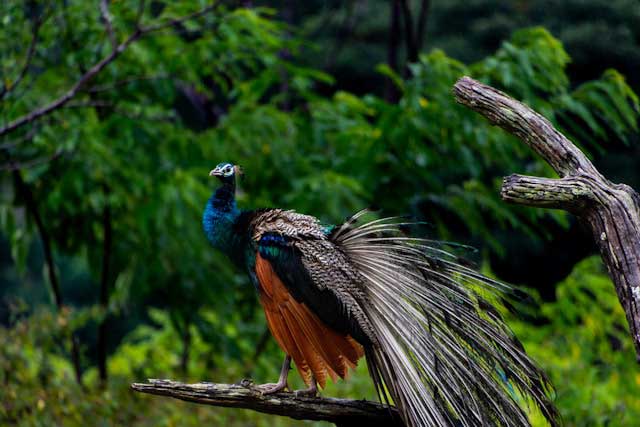
Kingdom: Animalia
Phylum: Chordata
Class: Aves
Order: Galliformes
Family: Phasianidae
Genus: Pavo
Scientific Name: Pavo cristatus
Fun Fact: The male Indian Peafowl, known as a peacock, displays a spectacular plumage during courtship to attract females.
Indian Peafowls are renowned for their vibrant and iridescent feathers. The males, with their ornate and colorful tails, are a sight to behold. These birds are native to the Indian subcontinent and are often associated with beauty, grace, and good fortune.
Indochinese Tiger:

Kingdom: Animalia
Phylum: Chordata
Class: Mammalia
Order: Carnivora
Family: Felidae
Genus: Panthera
Scientific Name: Panthera tigris corbetti
Fun Fact: The Indochinese Tiger is a critically endangered subspecies of tiger, facing numerous threats to its survival.
Indochinese Tigers are magnificent predators known for their strength, agility, and striking appearance. They have a distinctive pattern of dark stripes on their orange fur, providing excellent camouflage in their forest habitats. Unfortunately, their numbers have significantly declined due to habitat loss and poaching.
Ibex:
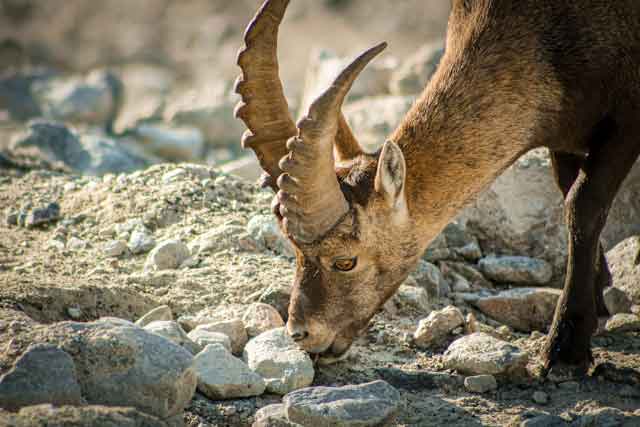
Kingdom: Animalia
Phylum: Chordata
Class: Mammalia
Order: Artiodactyla
Family: Bovidae
Genus: Capra
Scientific Name: Capra spp.
Fun Fact: Ibex are remarkable climbers, known for their ability to scale steep and rocky terrain with ease.
Ibex are sturdy and agile wild goats found in mountainous regions across Europe, Asia, and Africa. They possess impressive horns that curve backward and upward. Their hooves have excellent grip, allowing them to navigate challenging slopes in search of food and evading predators.
Irish Setter:

Kingdom: Animalia
Phylum: Chordata
Class: Aves
Order: Passeriformes
Family: Emberizidae
Genus: Passerina
Scientific Name: Passerina cyanea
Fun Fact: Male Indigo Buntings are known for their vibrant blue plumage, while females display more subdued colors.
Indigo Buntings are small songbirds known for their brilliant blue feathers. They are commonly found in North America and are highly admired for their melodious songs and striking appearance.
Imperial Eagle

Kingdom: Animalia
Phylum: Chordata
Class: Aves
Order: Accipitriformes
Family: Accipitridae
Genus: Aquila
Scientific Name: Aquila heliaca
Fun Fact: Imperial Eagles are powerful birds of prey known for their incredible eyesight and aerial hunting skills.
Imperial Eagles are large raptors with a wingspan of over 2 meters. They inhabit various habitats, including forests, steppes, and grasslands. These majestic eagles are skilled hunters and primarily feed on small mammals and birds.
Indian Rhinoceros
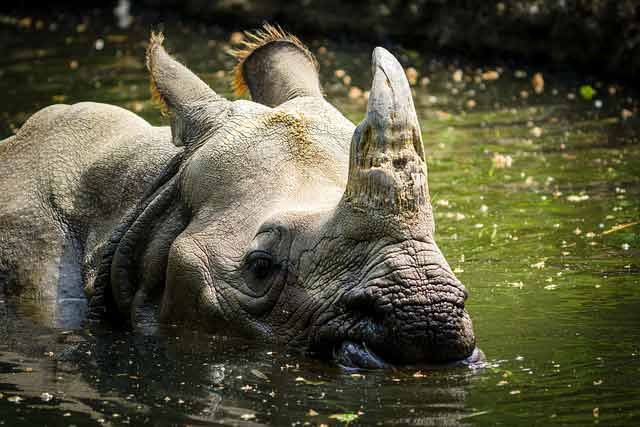
Kingdom: Animalia
Phylum: Chordata
Class: Mammalia
Order: Perissodactyla
Family: Rhinocerotidae
Genus: Rhinoceros
Scientific Name: Rhinoceros unicorns
Fun Fact: Indian Rhinoceros have a single horn and can weigh up to 2.5 tons, making them one of the largest land mammals.
Indian Rhinoceros, also known as the Greater One-Horned Rhinoceros, are massive herbivores found in the grasslands and swamps of India and Nepal. They have a distinctive single horn and a tough, armor-like skin that protects them from predators.
Iriomote Cat

Kingdom: Animalia
Phylum: Chordata
Class: Mammalia
Order: Carnivora
Family: Felidae
Genus: Prionailurus
Scientific Name: Prionailurus bengalensis iriomotensis
Fun Fact: Iriomote Cats are native to the Japanese island of Iriomote and are considered one of the rarest wildcats in the world.
Iriomote Cats, also known as Iriomote Yamaneko, are small wildcats endemic to the island of Iriomote in Japan. They have a reddish-brown coat with distinctive black markings. Due to their elusive nature and limited population, they are considered a critically endangered species.
Ivory-Billed Woodpecker

Kingdom: Animalia
Phylum: Chordata
Class: Aves
Order: Piciformes
Family: Picidae
Genus: Campephilus
Scientific Name: Campephilus principals
Fun Fact: Ivory-billed woodpeckers were thought to be extinct, but there have been rare sightings reported in recent years.
Ivory-billed woodpeckers are large woodpeckers known for their striking black and white plumage and impressive beaks. They were once widespread in the southeastern United States but are now critically endangered, primarily due to habitat loss.
Isopod

Kingdom: Animalia
Phylum: Arthropoda
Class: Malacostraca
Order: Isopoda
Family: Various
Genus: Various
Scientific Name: Various
Fun Fact: Isopods are fascinating crustaceans that can be found in various habitats, including freshwater, marine, and terrestrial environments.
Isopods, also known as woodlice or pill bugs, are small, segmented crustaceans with a rigid exoskeleton. They are known for their ability to roll into a tight ball when threatened, providing them protection. Isopods play important roles in decomposition and nutrient cycling in ecosystems
Irish Hare

Kingdom: Animalia
Phylum: Chordata
Class: Mammalia
Order: Lagomorpha
Family: Leporidae
Genus: Lepus
Scientific Name: Lepus timidus hibernicus
Fun Fact: Irish Hares can reach speeds of up to 70 km/h (43 mph), making them one of the fastest land animals in Ireland.
Irish Hares are native to Ireland and are closely related to European Hares. They have long hind legs, enabling them to excel in leaping and running. Irish Hares are known for their ability to change fur color from brown to white during the winter months.
Indian Palm Squirrel

Kingdom: Animalia
Phylum: Chordata
Class: Mammalia
Order: Rodentia
Family: Sciuridae
Genus: Funambulus
Scientific Name: Funambulus palmarum
Fun Fact: Indian Palm Squirrels have cheek pouches that they use to store and transport food.
Indian Palm Squirrels are small, agile rodents found in India and surrounding regions. They have a slender body, bushy tail, and a characteristic three-striped pattern on their back. These squirrels are highly adaptable and can be found in urban parks, gardens, and forested areas.
Inca Tern

Kingdom: Animalia
Phylum: Chordata
Class: Aves
Order: Charadriiformes
Family: Laridae
Genus: Larosterna
Scientific Name: Larosterna inca
Fun Fact: Inca Terns have a distinct mustache-like white feather tuft that gives them a unique appearance.
Inca Terns are seabirds found along the Pacific coasts of South America, particularly Peru and Chile. They have a black and white plumage with a bright red-orange beak and feet. Inca Terns are known for their loud, raucous calls and impressive aerial acrobatics.
Indian Jackal

Kingdom: Animalia
Phylum: Chordata
Class: Mammalia
Order: Carnivora
Family: Canidae
Genus: Canis
Scientific Name: Canis aureus indicus
Fun Fact: Indian Jackals are highly adaptable and can thrive in a wide range of habitats, including forests, grasslands, and urban areas.
Indian Jackals are medium-sized canids with a sandy or yellowish-brown coat. They are primarily scavengers but also hunt small mammals, birds, and reptiles. Indian Jackals play an important ecological role in controlling rodent populations and are widely distributed across the Indian subcontinent.
Isabella Tiger Moth

Kingdom: Animalia
Phylum: Arthropoda
Class: Insecta
Order: Lepidoptera
Family: Erebidae
Genus: Pyrrharctia
Scientific Name: Pyrrharctia Isabella
Fun Fact: Isabella Tiger Moth caterpillars are known as “woolly bears” and can be found crawling on the ground in search of food.
Isabella Tiger Moths are medium-sized moths known for their distinctive coloration, featuring shades of orange, brown, and cream. They are widely distributed across North America and are active primarily during the night. Isabella Tiger Moths are known for their fuzzy appearance and distinctive flight patterns.
Island Fox

Kingdom: Animalia
Phylum: Chordata
Class: Mammalia
Order: Carnivora
Family: Canidae
Genus: Urocyon
Scientific Name: Urocyon littoralis
Fun Fact: Island Foxes are endemic to the Channel Islands of California and have evolved into different subspecies on each island.
Island Foxes are small canids known for their petite size and unique adaptations to island environments. They exhibit different color morphs depending on the island they inhabit, ranging from gray to reddish-brown. Island Foxes play a crucial role in the ecosystem by controlling populations of rodents and other small mammals.
Indigo Snake

Kingdom: Animalia
Phylum: Chordata
Class: Reptilia
Order: Squamata
Family: Colubridae
Genus: Drymarchon
Scientific Name: Drymarchon spp.
Fun Fact: Indigo Snakes are non-venomous and rely on constriction to overpower their prey.
Indigo Snakes are large, powerful snakes known for their glossy, iridescent indigo-blue scales. They inhabit a variety of habitats, including forests, grasslands, and marshes, and are native to the southeastern United States. Indigo Snakes are important predators in their ecosystems and contribute to maintaining balanced reptile populations.
Iberian Lynx
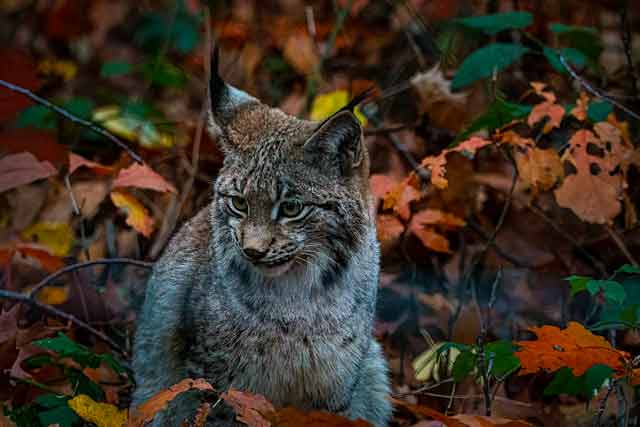
Kingdom: Animalia
Phylum: Chordata
Class: Mammalia
Order: Carnivora
Family: Felidae
Genus: Lynx
Scientific Name: Lynx pardinus
Fun Fact: Iberian Lynx is the most endangered wild cat species in the world, with a population of fewer than 1,000 individuals.
Iberian Lynx is a medium-sized wild cat native to the Iberian Peninsula in southwestern Europe. They have a distinctive appearance with tufted ears and a ruff of fur around the face. Iberian Lynx primarily feed on rabbits and play a crucial role in maintaining the balance of their ecosystems.
Indian Giant Squirrel

Kingdom: Animalia
Phylum: Chordata
Class: Mammalia
Order: Rodentia
Family: Sciuridae
Genus: Ratufa
Scientific Name: Ratufa indica
Fun Fact: Indian Giant Squirrels have a remarkable ability to leap from tree to tree, covering distances of up to 6 meters (20 feet).
Indian Giant Squirrels are arboreal rodents known for their large size and vibrant fur colors. They have a long, bushy tail and are predominantly found in the forests of India and Sri Lanka. Indian Giant Squirrels play an important role in seed dispersal and forest regeneration.
Indian Gavial
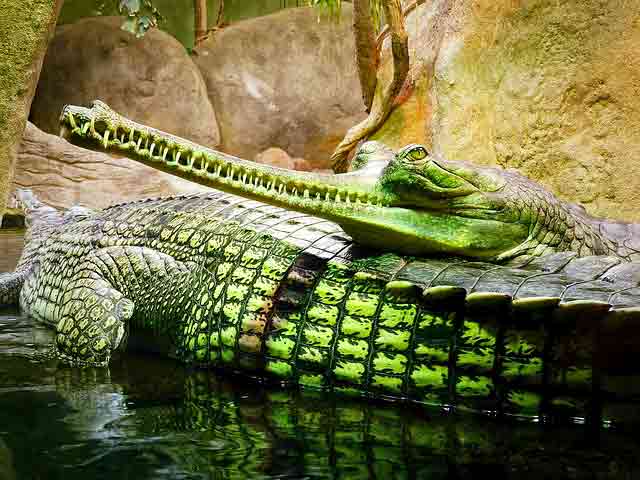
Kingdom: Animalia
Phylum: Chordata
Class: Reptilia
Order: Crocodylia
Family: Gavialidae
Genus: Gavialis
Scientific Name: Gavialis gangeticus
Fun Fact: Indian Gavials have long, slender snouts filled with sharp teeth, specialized for catching fish.
Indian Gavials, also known as the Ganges Gharial, are critically endangered crocodilians found in the rivers of the Indian subcontinent. They are characterized by their long, narrow snouts and distinctive, elongated jaws. Indian Gavials primarily feed on fish and play a vital role in maintaining aquatic ecosystems.
Imperial Shag

Kingdom: Animalia
Phylum: Chordata
Class: Aves
Order: Suliformes
Family: Phalacrocoracidae
Genus: Leucocarbo
Scientific Name: Leucocarbo atriceps
Fun Fact: Imperial Shags are excellent divers and can reach depths of up to 60 meters (200 feet) while hunting for fish.
Imperial Shags, also known as King Shags, are seabirds found along the coastlines of southern South America, particularly around the Falkland Islands and Patagonia. They have sleek black feathers with a metallic green sheen and are skilled swimmers and divers. Imperial Shags feed primarily on fish and form large breeding colonies on coastal cliffs.
Indian Gazelle

Kingdom: Animalia
Phylum: Chordata
Class: Mammalia
Order: Artiodactyla
Family: Bovidae
Genus: Gazella
Scientific Name: Gazella bennettii
Fun Fact: Indian Gazelles are known for their exceptional speed and agility, allowing them to evade predators in open grasslands.
Indian Gazelles, also known as Chinkara, are elegant antelopes found in the grasslands and deserts of the Indian subcontinent. They have a light brown coat with white underparts and distinct black stripes on their face. Indian Gazelles are herbivorous and play a vital role in maintaining the balance of grassland ecosystems.
Incirrate Octopus

Kingdom: Animalia
Phylum: Mollusca
Class: Cephalopoda
Order: Octopoda
Family: Octopodidae
Genus: Octopus
Scientific Name: Octopus spp.
Fun Fact: Incirrate Octopuses lack the characteristic cirri, or finger-like projections, on their arms, distinguishing them from cirrate octopuses.
Incirrate Octopuses are a diverse group of cephalopods found in oceans worldwide. They have soft bodies with a bulbous head and flexible arms. Incirrate Octopuses are known for their intelligence, camouflage abilities, and remarkable problem-solving skills.
Indian Flying Fox (Indian Fruit Bat)

Kingdom: Animalia
Phylum: Chordata
Class: Mammalia
Order: Chiroptera
Family: Pteropodidae
Genus: Pteropus
Scientific Name: Pteropus giganteus
Fun Fact: Indian Flying Foxes are large fruit bats and play a crucial role in pollination and seed dispersal in forest ecosystems.
Indian Flying Foxes are among the largest bats in the world, with a wingspan of up to 1.5 meters (5 feet). They have a dark brown to black fur and large eyes adapted for low-light conditions. Indian Flying Foxes primarily feed on nectar, fruit, and flowers.
Ivory Gull

Kingdom: Animalia
Phylum: Chordata
Class: Aves
Order: Charadriiformes
Family: Laridae
Genus: Pagophila
Scientific Name: Pagophila eburnea
Fun Fact: Ivory Gulls are known for their ability to withstand extremely cold temperatures and harsh Arctic conditions.
Ivory Gulls are medium-sized gulls found in the Arctic regions, particularly around the polar ice caps. They have pure white plumage, black eyes, and a short, stout beak. Ivory Gulls are opportunistic feeders, scavenging on carrion, fish, and marine invertebrates.
Indian Grasshopper

Kingdom: Animalia
Phylum: Arthropoda
Class: Insecta
Order: Orthoptera
Family: Acrididae
Genus: Poekilocerus
Scientific Name: Poekilocerus pictus
Fun Fact: Indian Grasshoppers are capable of remarkable jumps, using their hind legs as powerful levers.
Indian Grasshoppers are large, colorful insects known for their ability to leap and produce chirping sounds. They have a robust body, strong hind legs, and wings that enable them to fly short distances. Indian Grasshoppers play a role in plant pollination and are an important food source for various animals.
Indian Gray Mongoose

Kingdom: Animalia
Phylum: Chordata
Class: Mammalia
Order: Carnivora
Family: Herpestidae
Genus: Herpestes
Scientific Name: Herpestes edwardsii
Fun Fact: Indian Gray Mongooses are known for their agility and ability to stand on their hind legs to survey their surroundings.
Indian Gray Mongooses are small carnivorous mammals with a slender body, short legs, and a long tail. They have grayish-brown fur and a pointed snout. Indian Gray Mongooses are skilled hunters, feeding on a variety of prey, including rodents, snakes, and insects.
Iberian Newt

Kingdom: Animalia
Phylum: Chordata
Class: Amphibia
Order: Caudata
Family: Salamandridae
Genus: Lissotriton
Scientific Name: Lissotriton boscai
Fun Fact: Iberian Newts have the ability to regenerate lost body parts, including limbs, tail, and even parts of the heart and brain.
Iberian Newts are small amphibians found in the freshwater habitats of the Iberian Peninsula in southwestern Europe. They have a distinctive yellow-orange belly and dark brown or black coloration on their back. Iberian Newts undergo a complex life cycle, starting as aquatic larvae and eventually transitioning to fully terrestrial adults.
Indri Lemur

Kingdom: Animalia
Phylum: Chordata
Class: Mammalia
Order: Primates
Family: Indriidae
Genus: Indri
Scientific Name: Indri indri
Fun Fact: Indri Lemurs have the ability to produce loud, haunting calls that can be heard over long distances, helping them communicate within their social groups.
Indri Lemurs are large, arboreal primates found in the rainforests of Madagascar. They have dense black fur, a long tail, and strong hind limbs adapted for leaping through the treetops. Indri Lemurs are folivorous, primarily feeding on leaves, and are known for their incredible vertical leaps, reaching heights of up to 10 meters (33 feet).
Imperial Pigeon
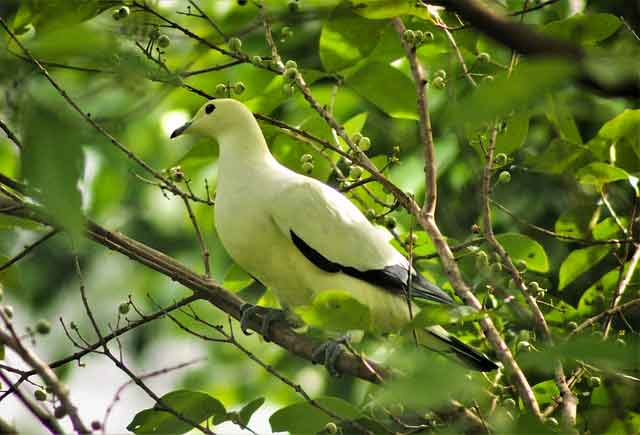
Kingdom: Animalia
Phylum: Chordata
Class: Aves
Order: Columbiformes
Family: Columbidae
Genus: Ducula
Scientific Name: Ducula spilorrhoa
Fun Fact: Imperial Pigeons are known for their distinctive cooing calls, which can be heard echoing through the forests.
Imperial Pigeons are large, arboreal birds found in tropical forests of Southeast Asia and the Pacific Islands. They have a bulky body, a short neck, and a prominent crest on their head. Imperial Pigeons primarily feed on fruits, and their role in seed dispersal contributes to forest regeneration.
Inland Taipan

Kingdom: Animalia
Phylum: Chordata
Class: Reptilia
Order: Squamata
Family: Elapidae
Genus: Oxyuranus
Scientific Name: Oxyuranus microlepidotus
Fun Fact: Inland Taipans are known to have the most toxic venom of any snake species, but they are typically non-aggressive and avoid human contact.
Inland Taipans, also known as the “fierce snake,” are highly venomous snakes endemic to central Australia. They have a slender body, a triangular-shaped head, and distinctive scales. Inland Taipans primarily feed on small mammals and are considered one of the most dangerous snake species in the world.
Indian Sparrow

Kingdom: Animalia
Phylum: Chordata
Class: Aves
Order: Passeriformes
Family: Passeridae
Genus: Passer
Scientific Name: Passer domesticus
Fun Fact: Indian Sparrows are highly social birds that form large flocks and communicate through a variety of vocalizations.
Indian Sparrows, also known as House Sparrows, are small passerine birds that are widely distributed across India and other parts of the world. They have a compact body, short wings, and a conical beak. Indian Sparrows are adaptable and commonly found in urban and rural areas, often nesting in buildings and feeding on grains and seeds.
Our adventure through the animal kingdom comes to a close, leaving us in awe of the wonders that animals beginning with “I” bring to our planet. From the powerful Indian Elephant to the graceful Impala, and from the vibrant Indian Peafowl to the elusive Indri Lemur, these creatures remind us of the diverse beauty of nature. Let’s continue to appreciate and protect these amazing beings, ensuring a harmonious coexistence with the remarkable wildlife that shares our world.
Read more about: 26 Animals That Start With G

